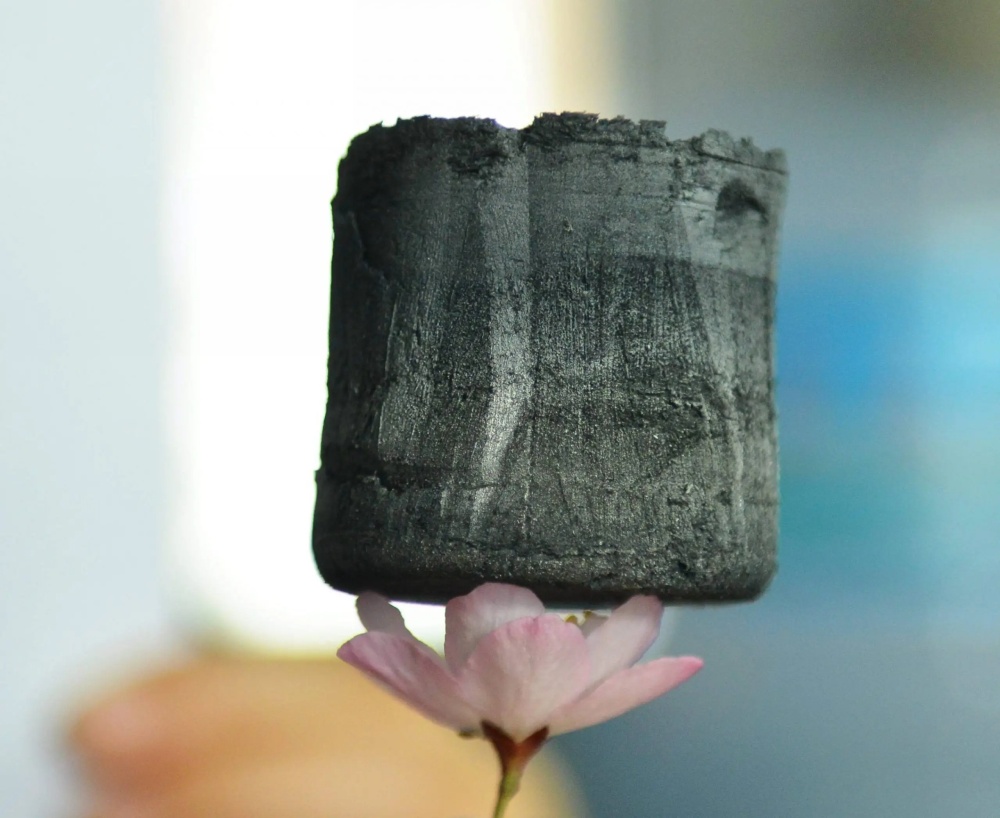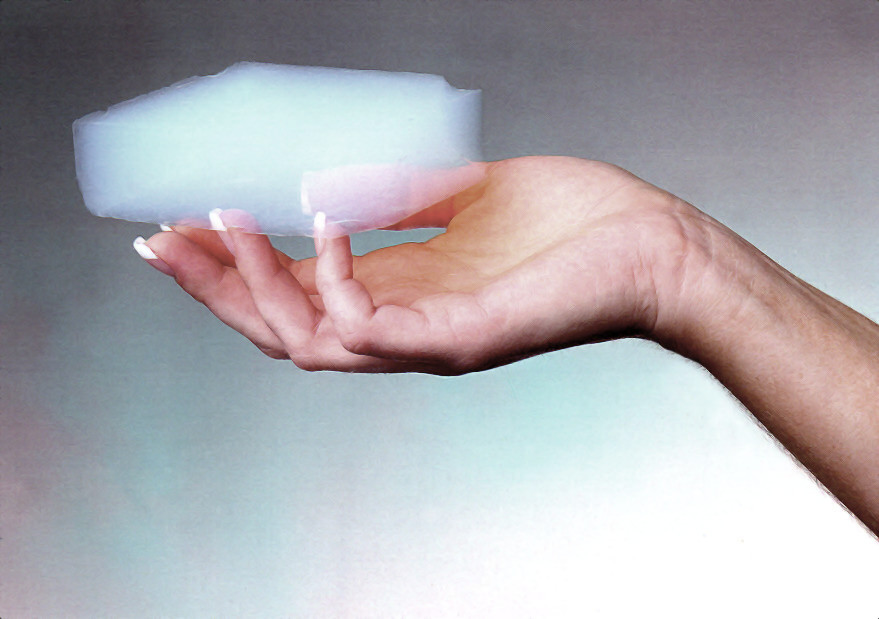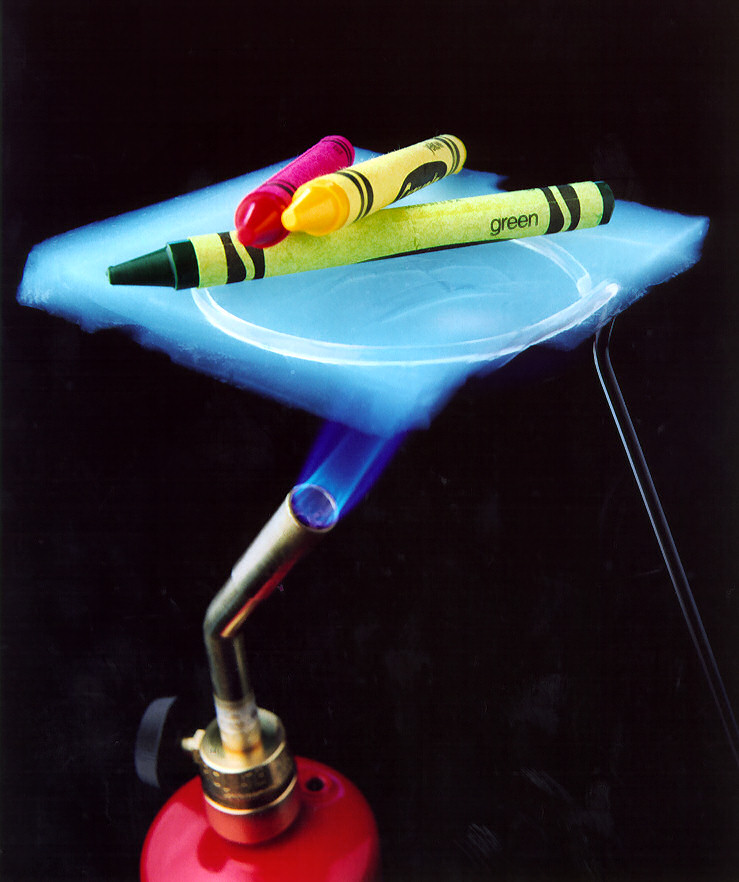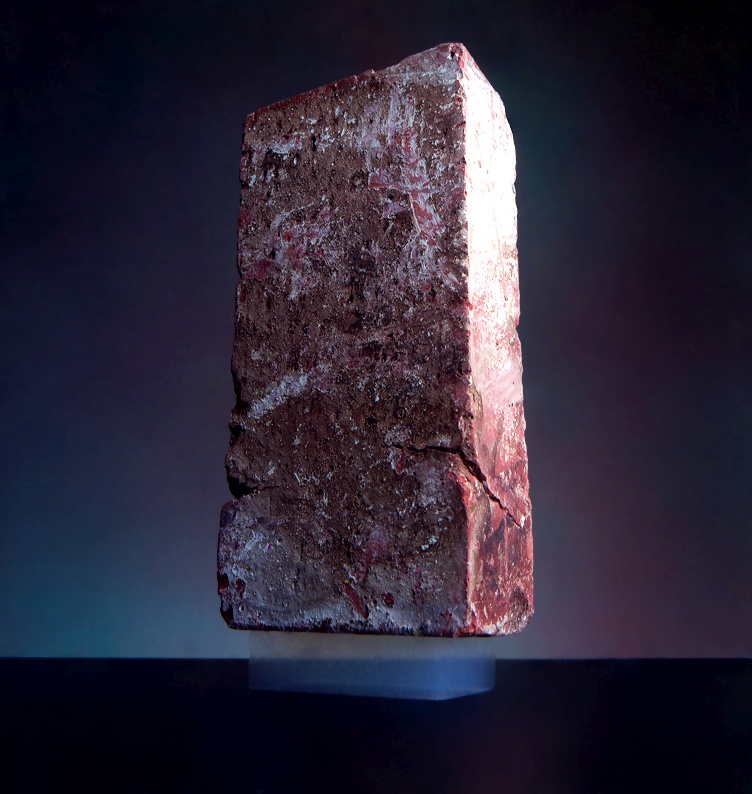Scientists have been able to create an ultralight material, dubbed the “solid cloud”.
- Tram Ho
Airgel is a synthetic porous and ultra-lightweight material created by replacing the liquid component of the gel with a gas, with the gel structure remaining mostly intact. Because of its rather distinctive appearance, this material is also known as “frozen smoke” or “solid cloud”.
Scientists have come up with more than a dozen formulations of airgels, ranging from those made from expanded polystyrene-like silica that is fragile to the touch, to several rigid foam-like polymer-based airgels. All these ultra-light gels, though, share the same process: mix chemicals together, let them settle into a wet gel, and then suck up the liquid inside. The result is an extremely low density substance with 99% air.
However, some types of airgel proved extremely light in terms of light. Graphene Airgel, the world’s lightest material, weighs just 0.16 milligrams per cubic centimeter. It has recently replaced aerographite, another ultralight airgel that has been studied by German scientists and weighs 0.2 milligrams per cubic centimeter. These airgels have excellent oil absorption capacity and are therefore very useful when cleaning oil slicks.

Peter Tsou with an airgel sample at the Jet Propulsion Laboratory, California Institute of Technology. Dr. Tsou’s research has focused on using airgels for space exploration.
To create an aerogel, the liquid component of the gel is removed through supercritical drying or freeze drying, allowing the liquid to be dried slowly without causing the solid substrate in the gel to collapse by capillary action, such as normal evaporation.
The first airgels were produced from silica gels, and the first documented example of aerogels was created by Samuel Stephens Kistler in 1931.

Carbon airgel has a black color and feels like touching coals when touched. They have large surface area, high porosity and good electrical conductivity. These properties make carbon aerogels very useful for capacitors, batteries and desalination systems.
The birth of Aerogel stems from a story told in the late 1920s, when Samuel Kistler (1900-1975), an American chemistry professor bet his colleague Charles Learned that “there exists. a non-liquid gel”. Of course, no one believed what he said was true. Because the liquid property that is inherent in gels has been known for a long time.
With his perseverance and determination, after many trials and many failures, Kistler finally found a gel in the gas state (not the liquid state), a new type of gel that has never been known. come, no one even imagined it. He became the first person to replace the liquid state of the gel with the gaseous state, and named it “Aerogel”. In 1931, he published his findings in the article “Coherent Expanded Aerogels and Jellies”, published in the scientific journal Nature.
Aerogels make excellent insulators because they virtually neutralize two of the three methods of heat transfer – conduction (they are almost entirely composed of insulating gases which are very poor conductors of heat) and convection ( Their microstructure prevents the movement of net gases). Aerogels can even have a lower thermal conductivity than the thermal conductivity of the gas they contain – a phenomenon known as the Knudsen effect.

With such a “gas and solid” structure, Aerogel is the world’s lightest material known to man. It is so light that it can be placed on a flower. With a volume of 1 cubic inch (about 16.3 ml) it can be laminated and covered an entire football field. Along with this property, there are some interesting things about Aerogel (type of silica): Holds 15 entries in the Guinness book of records for physical properties, typically lightest, strongest, best electrical insulation and density. lowest material.

Airgels are air-permeable, fire-resistant, and can absorb both oil and water. And yet, Aerogel can both be a conductor and can become the best insulator ever when mixed with a number of other materials.

With those extraordinary abilities, Aerogel deserves the name “best material on the planet”. With so many outstanding features, Aerogel can be applied in many fields, allowing people to do things that have never been done with materials before. However, the production cost of Aerogel is very high, because only a very small amount can be produced at a time and production conditions require advanced equipment. The current price is quite expensive, about 100 USD per cubic centimeter, or 23,000 USD per pound (about 453.6 g).

Although very light, an object made of Aerogel is capable of “carrying” another object 500 to 4,000 times its own weight. When it first appeared, Aerogel was applied in every field imaginable, from makeup products for women to more romantic things like making paint for napalm bombs. They are also used in cigarette filters or in refrigerator insulation. Currently, Aerogel can be found in areas such as: Manufacture of swimwear; Clothing for firefighters; Glass door; Rocket; Paint; Cosmetics; Nuclear weapons…..
References: Earthlymission; Nature; NASA
Nguồn bài viết : Genk
